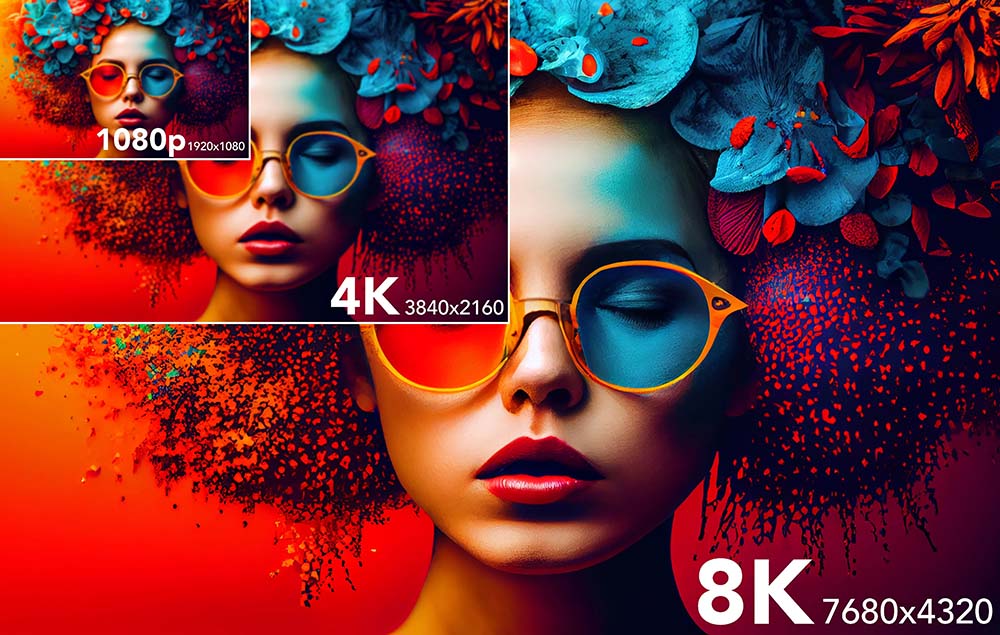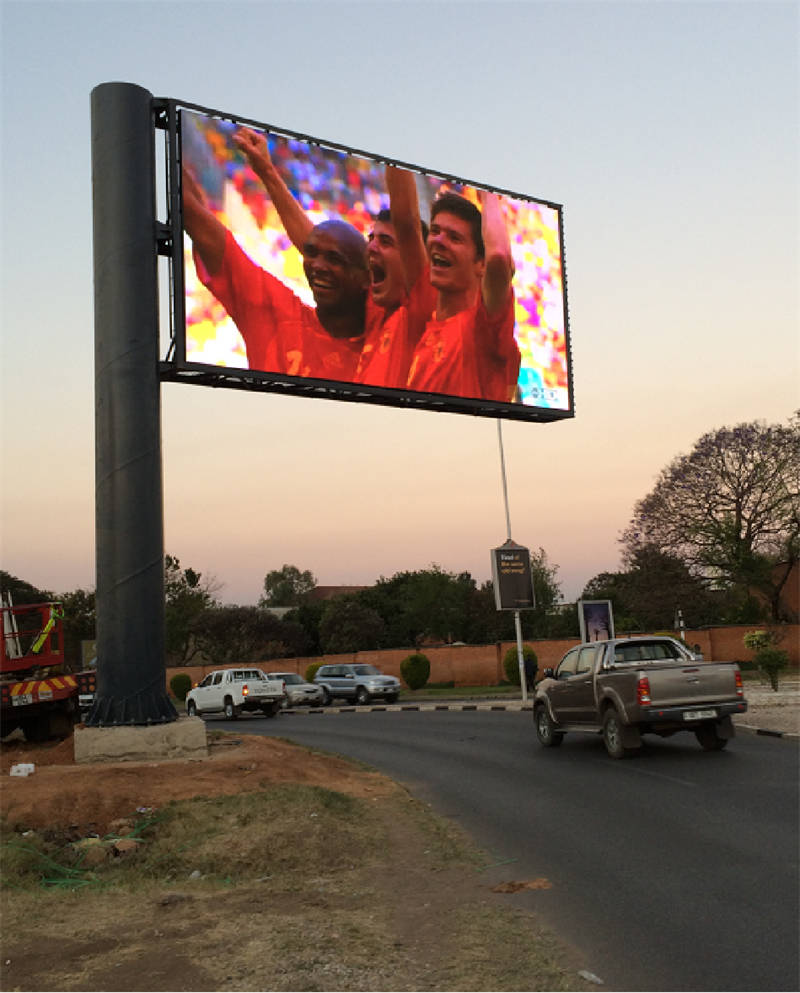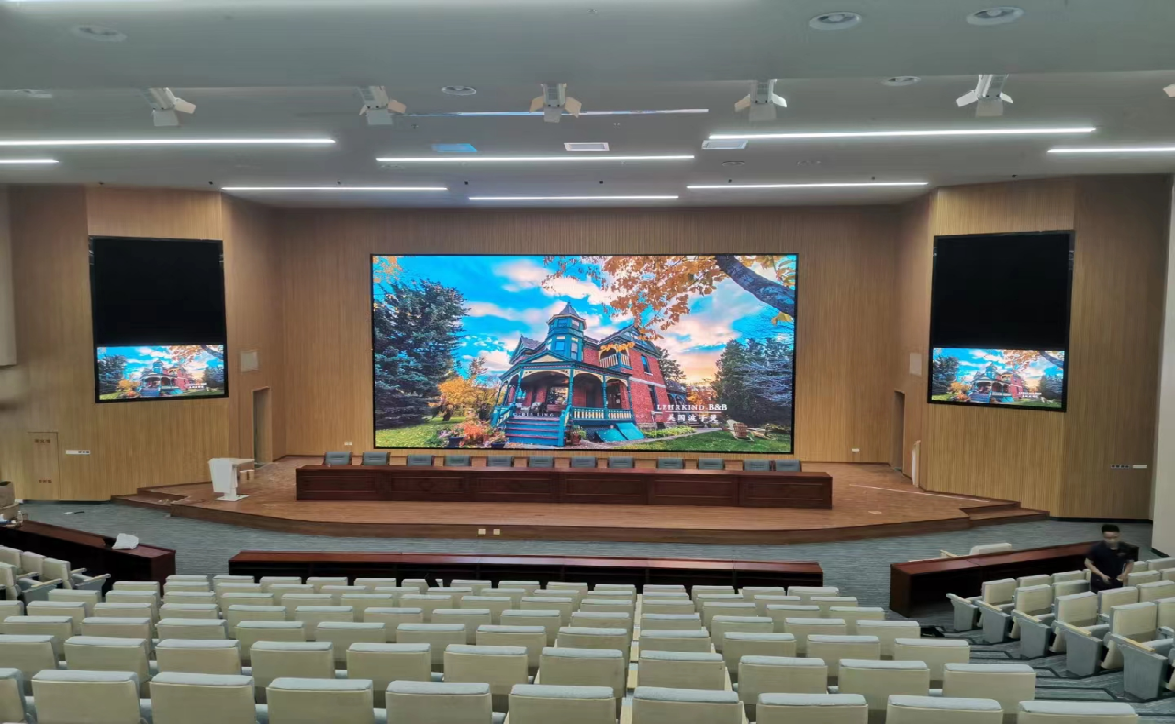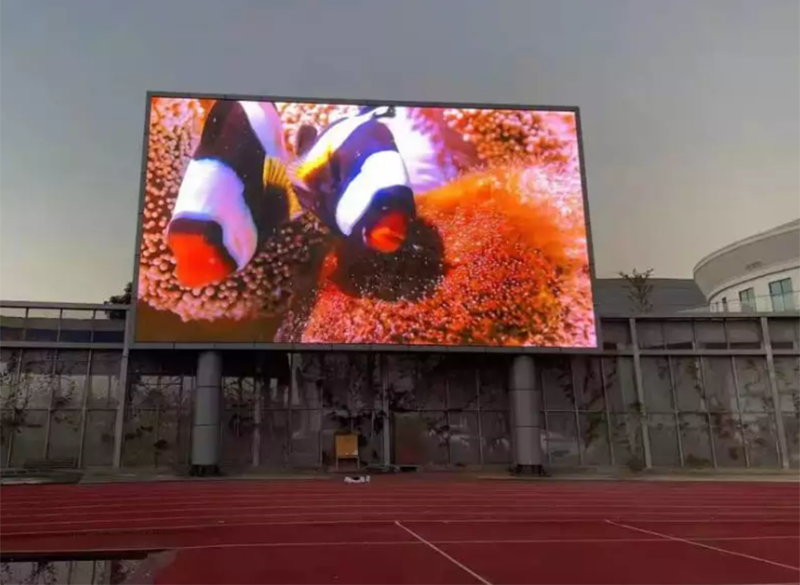The role of stadium LED displays in today’s sports events is becoming increasingly prominent. It is not only limited to the display of commercial advertisements, the recording of special moments and the assistance of fair judgment, but also undertakes more important missions, such as stimulating audience emotions and rendering the atmosphere of the scene. , and highlight the excitement of sports events.
This article introduces in detail the characteristics and application scenarios of stadium LED screens in sports events. I hope it will be helpful to you.
Table of Contents
Toggle1. What is stadium LED screen
Stadium LED screen is a large-scale LED display screen used in sports venues. It is based on advanced LED technology and is widely used in various sports events and venues. Its main functions include commercial advertising display, special moment recording, fair judgment, etc., providing the audience with a high-definition, bright-color visual experience.
The design of the stadium LED screen takes into account factors such as outdoor light and the distance of the audience. It has characteristics such as high brightness and strong contrast, ensuring that clear and vivid images can be presented in various environments. Through remote control and real-time updates, it can flexibly display scores, statistics and other information, injecting more highlights into modern sports events, and also becoming an important driving force for commercial promotion and sports industry development.
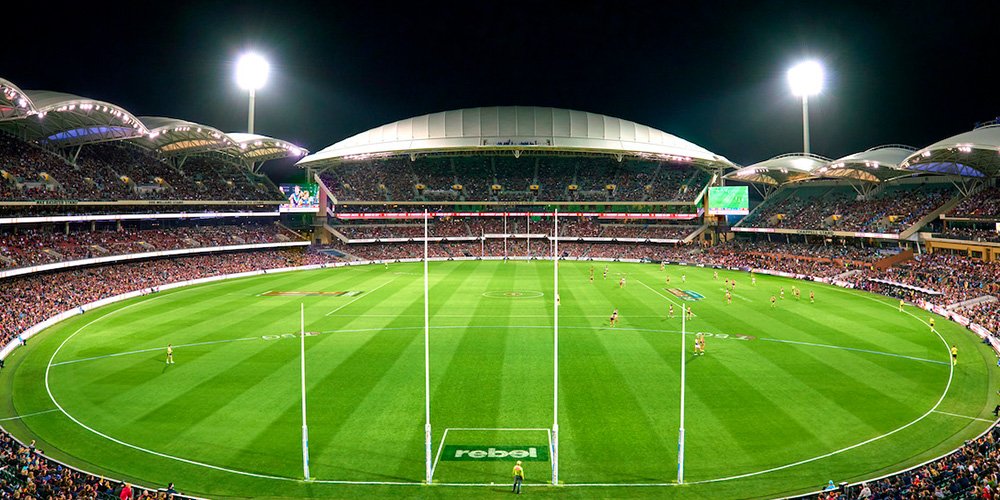
2. Main features of stadium LED display
As a key component of modern sports events, stadium LED displays have a number of unique features, including high refresh rates, wide viewing angles and more protection.
1. High refresh rate
In order to meet the needs of live video broadcasts, a refresh rate of 3840Hz is usually required, especially in large-scale sports events, which is crucial for quickly presenting every action of athletes. The high refresh rate not only provides a smoother and clearer picture display, but also helps reduce motion blur, ensuring that viewers can more accurately capture the highlights of the game when watching the game.
2. wide viewing angle
With a wide viewing angle of 140° horizontally and vertically, it ensures that more viewers (approximately 90-95%) can clearly see the content being displayed no matter where they are in the venue. This design provides wider visual coverage for large sports venues, ensuring that every spectator receives a consistent and high-quality viewing experience.
3. Provide more protection
Considering the special environment of sports venues, LED displays usually require more protective measures, such as soft masks and pillowcases. This not only helps protect the LED screen from external impact, but also ensures that in the event of a falling athlete or spectator on the screen, the impact force is slowed down and the risk of injury is reduced.
3. Why sports venues need screens
(1) Longer life
Compared with traditional lighting equipment and display technology, LED screens have a longer service life. The average life of the lamp beads used can reach 80,000-100,000 hours. Its stadium screens are not susceptible to weather conditions such as rain, snow, sun glare, etc. as they are manufactured to overcome these environmental factors.
(2) More professional
The continuous development of LED technology has significantly improved the color reproduction, brightness, contrast and other aspects of LED screens. In places such as sports venues that require extremely high visual effects, LED screens can provide clearer and brighter images, ensuring that audiences can watch the game accurately and happily.
(3) Easy to install
LED screens usually adopt a modular design, and modules can be flexibly spliced to adapt to different sites and needs. This flexibility makes the installation process easier and can be completed in a short time. For sports venues, this means they can be put into use more quickly and efficiently, adapting to the needs of different games and events.
(4) Programmable lighting control
LED screens can not only display images and videos, but can also control lighting effects through programming. This feature allows the LED screen to create a richer atmosphere through different lighting effects before, during and after the game, enhance the audience’s sensory experience, and make the stadium more layered and interesting.
(5) Another way of advertising
By displaying advertising content on the screen, sponsors can promote their brands in a more targeted way and reach a wider audience. This form of advertising not only has a higher visual impact, but is also more flexible and can be updated and adjusted in real time according to different events and activities, bringing more business opportunities for commercial cooperation.
4. Application scenarios of LED displays in sports venues
As an important part of modern sports venues, LED display screens in sports venues are widely used in various scenarios. Their application scenarios are mainly classified according to purpose and installation environment.
Stadium LED displays can be divided into different types according to their uses:
LED full-color screen: used to play highlights of the stadium (including other sports venues), as well as close-ups of slow-motion replays.
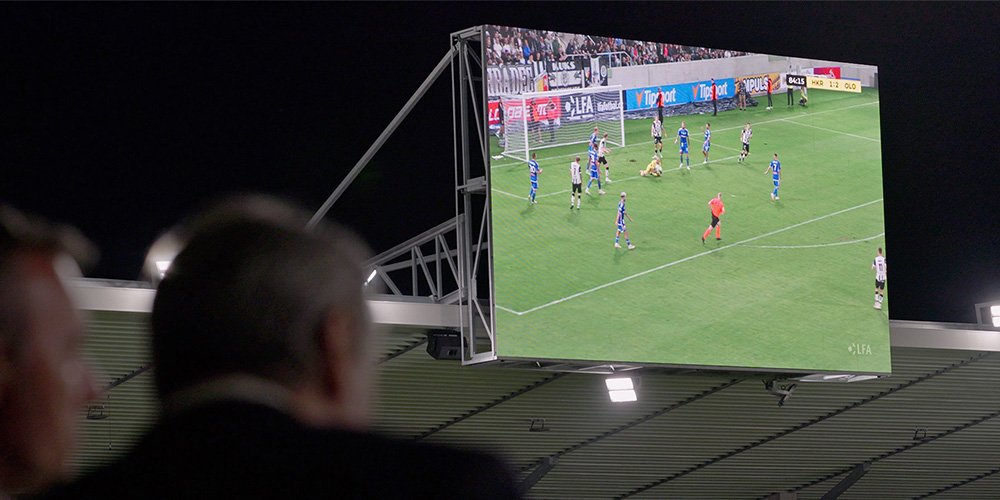
LED perimeter screens in sports venues: mainly used for playing commercial advertisements. Consists of multiple independent LED boxes connected by snap connectors for quick and easy disassembly and maintenance. There are independent supporting feet behind each box. The angle between the screen and the ground can be adjusted through the supporting feet to ensure a good viewing angle for the audience.
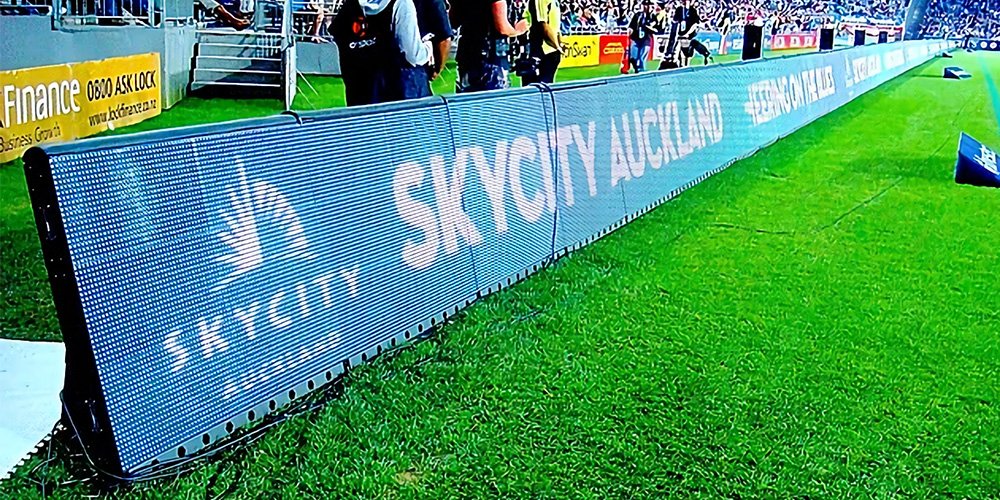
LED scoring screen: connected to the timing and scoring system of the competition, playing the players’ competition results and related information. In the game, timing and scoring pictures are even more important.
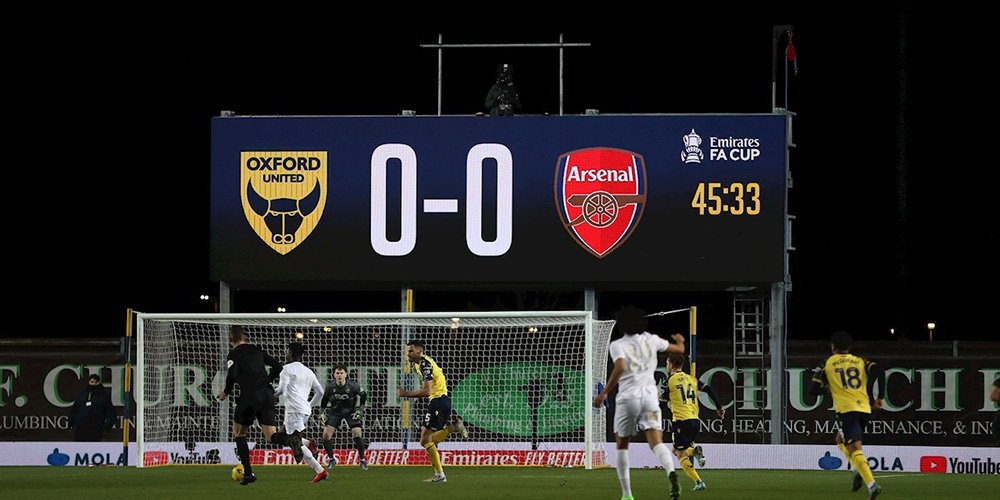
LED display screens in sports venues are classified according to the installation environment:
Football field LED screen: installed around the football field, mainly used for advertising. Through the control of the system software, the loop playback of advertisements is realized, with rich content and remarkable effects.
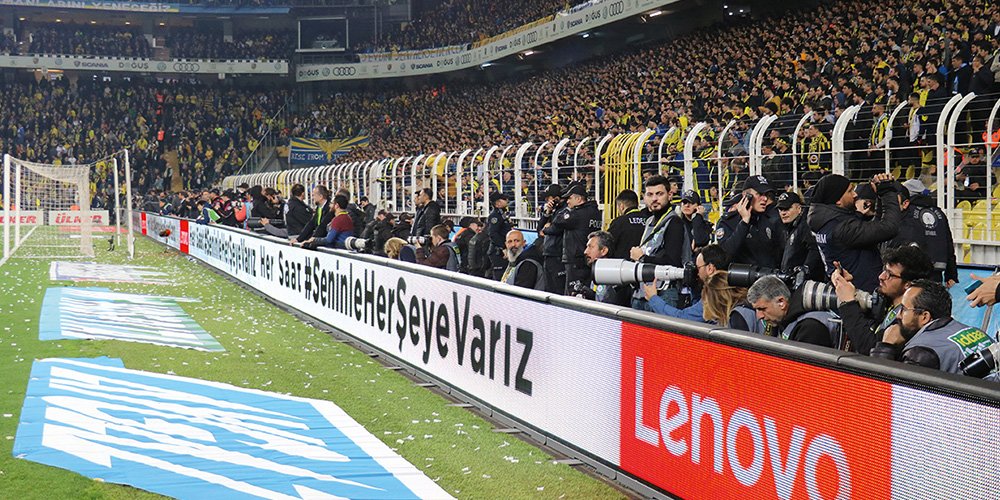
Funnel-shaped LED screen: suspended and installed above indoor sports venues, used to introduce athletes, display scores, communicate event progress and other live event situations. Widely used in basketball courts and multi-purpose stadiums.
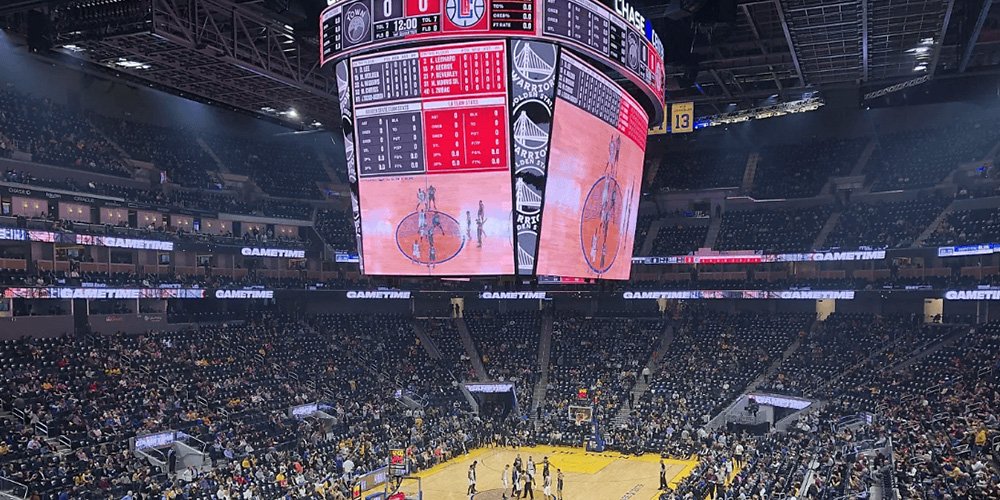
Stadium wall LED display: installed on the wall at one end of the stadium, used to broadcast live events simultaneously and display real-time event information.
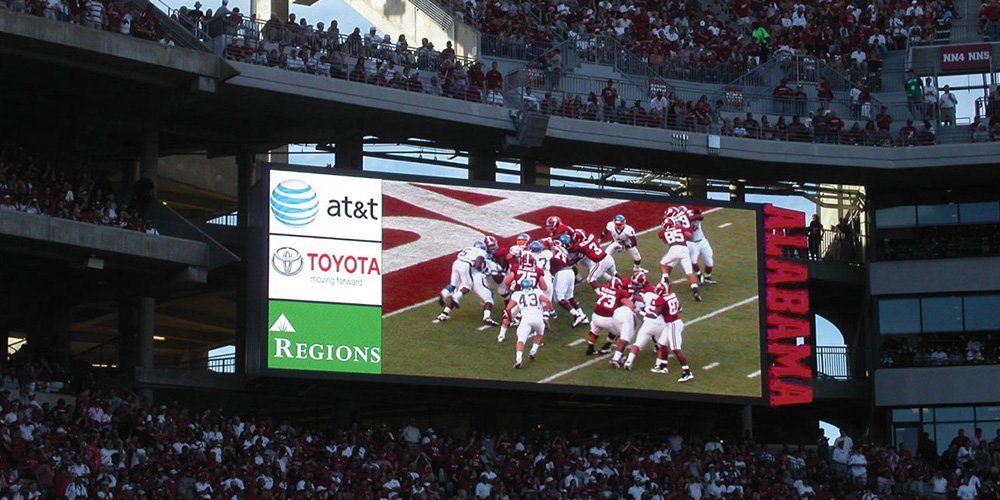
Outdoor column LED display: installed on the large columns of the outdoor stadium, it is required to be of high quality, windproof and dustproof, good temperature adaptability, and adaptable to various weather conditions.
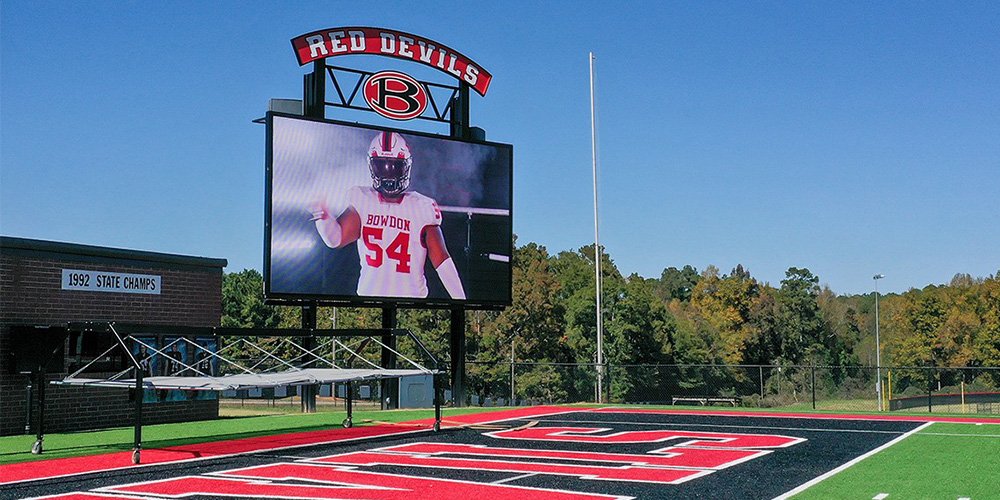
5. How to choose the right LED stadium LED screen
1. Screen protection performance
Whether it is an indoor or outdoor stadium, heat dissipation has always been the focus of sports screens. Especially for outdoor screens that withstand changing climates, high flame retardancy and protection levels become a must. Generally, it is ideal to choose a screen with IP65 protection grade and V0 flame retardant grade.
2. Overall brightness contrast and energy efficiency
Outdoor sports display screens have higher brightness requirements, but the larger the brightness value, the more suitable it is. The brightness, contrast, and energy-saving effect of the LED screen should be comprehensively considered, and LED display products with high energy-efficiency design should be selected to ensure reliable guarantees in terms of safety, stability, and service life.
3. Choice of installation method
The installation location determines how the LED display is installed. When installing screens in sports venues, you need to consider whether the screen needs to be floor-mounted, wall-mounted or embedded in the wall, and whether it supports front and rear maintenance to ensure the convenience of installation and maintenance.
4. viewing distance
According to the characteristics of the audience in sports venues, the viewing distance of the audience needs to be considered when selecting LED displays. Large outdoor stadiums usually need to consider medium and long distance viewing, and choose displays with larger dot pitches, such as P6 and P8. Indoor audiences have a closer viewing distance, so it is appropriate to choose screens with smaller dot pitches such as P4 and P5.
5. Is the viewing angle wide?
Due to the different seating distribution of spectators in sports venues, it is necessary to ensure a wide viewing angle when choosing an LED screen to ensure that every spectator can enjoy a good viewing experience.
6. High refresh rate
Choosing a display with a high refresh rate can ensure smooth and coherent live broadcasts of large-scale sports events, providing viewers with a more comfortable and natural viewing experience.


